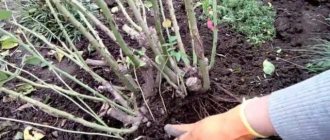Regardless of their origin, many types of primroses fit perfectly into the harsh climate of Russia with frosty, snowy winters and damp, cool springs. Conditions similar to the habitat facilitate cultivation and minimize the care of primrose, ensuring earlier, abundant and long-lasting flowering. Thanks to this, the delicate touching flower, heralding the arrival of spring, did not get lost among other early-blooming crops and gained nationwide love.
A little messenger of spring, brightening up the gloomy garden with bright colors.
Why know the origin of the primrose?
The genus Primrose grows wild on 5 continents and includes more than 600 species, while garden forms and hybrids number in the thousands and are cultivated everywhere on the planet. More than 30 types of garden primrose are perfectly adapted to growing in open ground in Russia and do not require complex care. And yet, having decided to plant this or that primrose in the garden, take an interest in its origin. What you should pay attention to?
- You are purchasing a forest, mountain or swamp plant. Forest species (P. vernal, P. vulgare, P. tall) are more moisture-loving and do not tolerate 40-degree heat. Mountain primroses (P. Julia, P. aurica) can more easily withstand high summer temperatures; their leaves are covered with a waxy coating, which prevents moisture evaporation, so their foliage remains decorative until late autumn.
- Most primroses are perennial plants, but some species prefer to be grown in a biennial culture (P. mealy, group P. candelabra). Although their rosette does not die immediately in the third year, the decorative effect of the flower deteriorates sharply.
- It is important how adapted the plant is to open ground conditions. Along with garden primroses, some species are cultivated only in pots (P. obconica, indoor hybrids of P. vulgare). Plants from the candelabra primrose section, muscarioides need to be covered for the winter.
- Unpretentious primroses are more suitable for the garden, but capricious collectible hybrids with unusual colors, abundantly covered with powdery coating, require special technology and greenhouse conditions.
Knowing the origin and individual preferences of the flower, you can understand how to properly care for primrose.
Auricula is beautiful, like a collection primrose, but hardy and unpretentious in care. General requirements for agricultural technology of primroses
What do most types of primroses that are found in our gardens have in common?
- Plants need coolness to actively grow. In early spring this is not a problem. But the second intensive period of root growth and flower bud formation occurs in the last month of summer, when the weather is hot, dry. To reduce the harmful effects of the sun, places in partial shade are chosen for growing primrose. They also save from the heat with intensive watering.
- Dryness is the second enemy of primrose. The flow of sap and the beginning of the growing season coincides with the period of snow melting, when there is an abundance of moisture, and the plant evaporates its excess through the leaves. Nature laid down a mechanism for intense evaporation, but did not provide for the reverse process - stopping the loss of moisture in hot weather. If you miss watering, the bushes may dry out and die.
- Primroses are more demanding of soil structure than soil fertility. The main thing is that the rhizome breathes and does not flood. When planting primrose in open ground, low-lying areas are drained and the structure is adjusted. Thus, clayey soils are loosened with sand, high peat, and humus, while sandy soils are compacted and enriched by adding organic matter.
- The biological feature of the growth of primroses is the protruding rhizome and the rapid growth of the bush. If the plant is not divided and replanted to a new place if it becomes too thick (every 3-5 years), it will grow and die.
A rocky slope of an alpine hill on the eastern or western side is a suitable place for auricular primrose
Technology for cultivating garden primroses
It is not difficult to find a place for primroses in the garden. They are planted in flower beds with eastern and western exposure, on the slopes of rock gardens, under trees, in the shade of bushes and tall perennials. The only condition for choosing a place to grow primroses is that the plant receives a portion of the morning sun, but is sheltered from the scorching midday rays.
Advice! The mobile option of planting primroses in outdoor containers, boxes, and portable flowerpots is becoming increasingly popular. They can be placed in any convenient place, and, if necessary, used to decorate the yard, lawn, or gazebo.
Planting primroses
When starting to plant primroses, whether with seeds or rosettes, the first step is to prepare the soil. Add humus based on rotted plant residues or manure in an amount of 15–20 kg/m² to the garden soil, add a bucket of sand to the same area, and apply full- or long-acting fertilizers for beautiful flowering plants according to the instructions.
There are several ways to breed primroses.
- Through seedlings. Seeds are sown in February in seedling boxes (cassettes) with light loose substrate and peat tablets. A prerequisite is cold stratification of seeds for 3 weeks. After sowing, the container is covered with film and sent to a cool place (not higher than 18⁰ C). The greenhouse is removed after germination (after 3–4 weeks). When 2–3 leaves appear, the seedlings dive into individual containers or directly into the flowerbed.
Advice! As practice shows, it is still better to plant a primrose seedling for growing, cover it for the winter, and plant it in a permanent flowerbed in the spring or even autumn of next year.
- Sowing seeds in open ground. The most reliable option to get guaranteed seedlings is to sow them before winter - in late October - early November. Sow sparsely, on the surface of the bed, and mulch the top with a thin layer of humus.
- Rosettes when dividing an old bush. This option is used to propagate existing varieties. They practice early spring (before flowering) and autumn planting of primrose with rosettes, but no later than mid-September. Otherwise, the seedling will not have time to take root and may suffer from frost. If you are still late with the autumn transplant, wait until spring or cover the young bushes with fallen leaves and spruce branches.
Advice! The generally accepted scheme for planting primroses is in clumps; in a group, plants are placed at a distance of 10–15 cm. As the rosette grows, it covers the root zone with foliage, which prevents moisture evaporation, drying out of the rhizome, and overgrowing of the bush with weeds.
Primrose seedlings in cassettes, ready for transplanting to a permanent place
Care during flowering
In early spring, it is important not to skip the first feeding of the plant. It is done as soon as the snow melts. The bushes are topped with organic matter - slurry diluted with water in a ratio of 1:10. Or use complex mineral fertilizer, which is scattered on moist soil. The norm is 25–30 g for an adult bush. Feeding is not needed if the rosettes are sprinkled with humus in the fall.
If spring is dry, primroses are watered. To prolong flowering, it is recommended to promptly remove wilted flower stalks.
Care after flowering
Caring for primrose after flowering is kept to a minimum, since until August the plant is in a state of summer dormancy. At this time, pay attention to the condition of the soil. If it is too dry, the leaves will begin to wither and the root collar will dry out. This cannot be allowed.
Before the plant begins to grow (at the end of July), feed it with a phosphorus-potassium mixture. This stimulates the growth of bushes, the establishment and ripening of new flower buds.
Dividing the bush
When a perennial sits in one place for a long time, it grows so much that the rosettes stick out against each other and become bare. Nutrition in the soil is depleted and pathogenic microflora accumulates. This is the main reason why the leaves become smaller and the primrose does not bloom or blooms poorly.
There is only one recipe - divide and replant the bush as often as possible. Some people do this every year, but the generally accepted practice is once every 3-4 years. The primrose is moistened abundantly, dug up, the roots are cleared of soil and divided into parts - one or 2-3 rosettes. Each division should contain a piece of rhizome with at least one renewal bud. If the roots are very long, leave 10 cm, cut off the rest. The root collar is not buried, the soil is mulched.
Divide the bush early in the spring. Many people are concerned about whether it is possible to replant primrose in September, like ordinary perennials. Primrose tolerates division well at the junction of summer and autumn, when it awakens after summer dormancy. When transplanting in the second half of September, it is better to cover the plantings for the winter, in case the plant is not sufficiently rooted.
An overgrown primrose bush is literally full of rosettes that need to be divided
Preparing for winter
Caring for primrose in the fall comes down to watering the transplanted rosettes, and for 1–2 weeks - in small portions, but daily. The rosette of leaves, like other perennial flowers, is not cut off - let it cover the rhizome. The bush is sprinkled with humus. The substrate performs several functions:
- covers bare rhizomes;
- insulates the root zone;
- Serves as an effective supplement.
Some types of primroses require more thorough preparation for winter. They are covered with leaves and lutrasil on top with the onset of frost and are opened only in March, when the growing season of primroses begins. Some hybrids recommend transferring them to a box for the winter and storing them in a cool room.
What to do with iris after flowering: basic care rules
Irises, like many other perennials, need special care in the autumn and after flowering. And although the maintenance of these plants is not overly painstaking, iris requires a special approach. If you follow some simple rules of care after the end of the flowering period, you can avoid many troubles and provide your flowerbed with blooming iris in the next spring-summer season. Let's look at these rules in our article.
Do irises need to be cared for after flowering?
Irises are perennials, and their blooming next year is directly related to how you care for them after they finish blooming.
Basic color manipulations include:
- pruning, which, however, is carried out during the entire flowering period and especially at the end of this period;
- feeding plants and caring for the soil in which they grow;
- maintaining the required degree of soil moisture;
- mandatory treatment against various pests and diseases;
- preparation for winter in the form of mulching and insulation.
An important place is occupied by pruning of iris, which consists of trimming faded buds during the flowering period, which often stretches from May to early August due to the fact that the flowers do not bloom at the same time
- killer whales reproduce by self-seeding. If you do not cut off the bud with the receptacle in time, then soon the iris seeds will be scattered throughout the garden and can germinate in the most unexpected and undesirable places;
- the flowering period is shortened, new buds do not open so intensively, which does not help maintain the aesthetic appearance of the flowerbed;
- wilted buds can rot and cause plant disease;
- at the end of August, faded iris becomes withered, therefore, if faded peduncles and yellowed parts of leaves are not removed, pathogenic microorganisms may multiply in these parts.
Basic rules of care
The main care for irises after flowering is to provide their roots with moisture and necessary nutrients, to protect them from pests and to take care of the ground part, which must be promptly and correctly removed.
Trimming
Pruning of plant buds should be carried out throughout the flowering period as individual flowers wither. It is advisable to check your flower beds at least once every couple of weeks and remove faded flowers in a timely manner. Such manipulations prevent self-seeding of iris and prolong their flowering period.
Trimming faded buds occurs as follows:
use sharp scissors or pruners, which must be clean; cut off the bud completely
It is important that you remove not only the withered, flaccid petals, but also the green receptacle underneath them. The essence of the procedure is precisely the removal of the ovule, in which the seeds ripen; as a last resort, if you don’t have pruners or scissors, you can simply pinch off the flowers carefully with your fingers
Make sure your hands are clean.
Final pruning of irises occurs in late summer, when new flowers are no longer expected to bloom. In this case, the stems on which there were flowers are completely cut off. Moreover, you need to cut off the stems quite low - about 2-3 centimeters above the rhizome. It is best to carry out the procedure with fairly sharp pruning shears or scissors, since the stems of irises are quite fleshy and durable. Complete removal of the stems is necessary because they are very susceptible to rotting. To avoid waste, iris stems can be used as compost.
After the buds and stems have been completely removed, the iris leaves can be left standing until they begin to turn yellow. Most often this happens by the first half of October, when they are pruned. This is also done with scissors or pruning shears. Some of the leaves are cut at a distance of about 13–14 centimeters from the ground, giving them a cone shape.
Popular articles 7 best materials for making garden paths
This method of pruning foliage allows not only to remove withered and yellowed parts, avoiding rotting and the spread of pests, but also to ensure the accumulation and transfer of energy to the roots of the plant for successful wintering, which becomes impossible if the entire above-ground part is completely removed.
It is recommended to burn the cut parts of the leaves, preferably away from your site. The thing is that many insects lay eggs on leaves. If they are not burned, pests may spread throughout your summer cottage, and leaves left intact will cause plant diseases.
Diseases and pests of primrose
The causes of primrose diseases usually lie in violations of agricultural technology.
- Root rots are fungal in nature, affecting the neck of the plant and leading to damping off of the rosette. The reasons are stagnation of moisture in the root zone, thickened plantings. Gradually, rot covers the stem and leaves. The affected parts of the plant are destroyed, the bush is sprayed with a fungicide solution.
- Fungal infections also include spots that affect leaves. Gradually they grow, become covered with a coating of sporulation, leading to the death of the leaf blade. Control measures are the same as in the previous case.
- In hot weather, spider mites can breed on the plant. It is diagnosed by faded leaves and the finest cobwebs on their reverse side. In case of severe infection, the bushes are treated with acaricides.
The best way to prevent primrose diseases is to transplant to new soil and maintain temperature and water conditions.
How to grow primroses in open ground:
In the wild, primroses grow in forests, mountains and meadows; they can be found along river banks and forest edges. The plant has been known since ancient times and was called the flower of the 12 gods due to its strong healing effect.
These low primroses with wrinkled leaves. collected in a rosette, and drooping golden flowers with a pleasant aroma, people also call them keys - according to legend, the Apostle Peter dropped the keys to Paradise on the earth - primroses - primroses - grew in this place.
Spring primrose, photo:
Watering
Although the plant does not need special moisture, watering should still be carried out followed by loosening the soil. As a rule, the operation after winter is performed once a week. During hot weather, irrigation is carried out at double the rate.
Approximately one square plot will require at least 3 liters of water. However, stagnation of liquid in the tree trunk area is not allowed, as is the formation of an earthen crust after watering.
If it dries out, as well as overmoistening, the primrose root ball may die.
Types of primroses
More than 500 species of primrose are known. In our middle zone, they grow ten times less, but a large number of varieties and hybrids, divided into sections, have been bred from them.
Section Primrose.
Unites 4 wild species, of which the most famous and beloved is the common primrose. It blooms in April-May for about a month, closer to autumn it can bloom again.
Photo of primrose primrose:
Auricular section.
The most beautiful representative is the auricular primrose with leathery leaves with jagged or not. Winters well in central Russia. Flowering time is June, even part of July.
Primula aurica, photo:
Why isn't there a miniature rose in the photo?
Julia's section.
The height of the bush is no more than 10 centimeters. very unpretentious when planting or caring, hybrids have a wide variety of colors. Blooms early in spring.
Section Muscarioides,
Very original appearance, biennial plant. In winter, open ground needs shelter. Demanding on moisture, planting for a shady place.
Powdery primrose section.
Multi-tiered inflorescences, up to 30 cm high. Winter-hardy.
Section Cortusiformes, photo:
Gear Section.
It blooms for about two months from the end of April. Unpretentious.
Globular flowers, photo:
Flower varieties
Despite the many types of perennial plants, only a few have gained popularity in gardening. This is due to their unpretentiousness to growing conditions and spectacular appearance.
Ordinary
Another name for this primrose is stemless; it is considered one of the most popular among gardeners. Its height does not exceed 20 cm, and the flowering period begins in April. The leaf blades are rich green in color, corrugated on top and oval in shape. The color of the flowers varies from white to purple, their diameter ranges from 2 to 4 cm.
Advantages and disadvantages
Unpretentiousness to the composition of the soil. Compact sizes. Rich color palette. Early flowering periods.
The need to grow in partial shade, bright sunlight spoils the color of the petals. Requirement for watering.
I like it I don't like it
Primrose Hallera
The mountain slopes of the Carpathians and the Alps are considered the homeland of the Haller primrose. There, primrose chooses sunny areas with calcareous soil. The height of the plant is from 10 to 30 cm, and the color of the petals is light purple. The first flowers delight with their appearance, starting from the last days of April.
Advantages and disadvantages
Attractive appearance. Ease of reproduction. Early flowering periods.
Poor germination of seeds in the second year after collection. Requires open sunny areas.
I like it I don't like it
Spring
Spring primrose, or medicinal, is characterized by sweet-smelling flowers of bright yellow color and short height. The buds are collected in umbrella-shaped inflorescences up to 15 cm in diameter.
Advantages and disadvantages
Undemanding to the place of cultivation. The pleasant aroma that primrose exudes during the flowering period. Possibility of use as a medicinal plant.
The only shade of buds in this group. Short flowering period.
I like it I don't like it
Auriculate
This variety of primrose is evergreen. The species itself has only one color - yellow, but hybrids are red, white and green. The height of the peduncles is up to 25 cm, the buds are collected in umbrella inflorescences.
Advantages and disadvantages
Decorative appearance of primroses. Undemanding to soil composition. Early flowering periods.
The need for frequent watering. Low seed germination in the second year after collection.
I like it I don't like it
Small
The smallest of the primroses, whose homeland is considered to be the Balkans and the Carpathians. The diameter of the pink-red flowers does not exceed 3 cm; in appearance they resemble small stars. The flowering period begins in mid-May.
Advantages and disadvantages
Compact sizes. Shade tolerance. Average winter hardiness. Decorative appearance of buds.
Short flowering period. Requirements for soil moisture.
I like it I don't like it
Mealy
Representatives of this species are the shortest-lived, they are usually grown for 2 years, then the plantings need to be updated. The color palette ranges from white to reddish-violet.
Advantages and disadvantages
Many varieties with different shades of petals. Undemanding to the place of cultivation. High decorative qualities. Easy propagation by seeds.
Short flowering period. Inability to grow for more than 2 years.
I like it I don't like it
High
One of the tallest types of primrose - it grows up to 40 cm. The flowering period begins in April and lasts up to 45 days.
Advantages and disadvantages
High decorative qualities of leaves and flowers. Ease of vegetative and seed propagation. High winter hardiness. Long flowering period.
Requires light soils. The need to use fresh seeds for propagation.
I like it I don't like it
Reverse conical
This type of primrose has some of the largest flowers - up to 6 cm in diameter.
Advantages and disadvantages
Ease of reproduction. Low maintenance requirements.
The short lifespan of the plant is 2 years. The need for regular hydration.
I like it I don't like it
Malva-like
This type of primrose is highly valued among gardeners for its decorative qualities. The flower grows up to 30 cm in height and is characterized by an abundance of buds.
Advantages and disadvantages
Wide range of petal colors. Early flowering times during autumn planting.
Low seed germination in the second year after collection. Requirements for the irrigation regime.
I like it I don't like it
Japanese
One of the late-flowering species. The diameter of the buds is up to 2 cm, they are located on strong peduncles.
Advantages and disadvantages
Easy to care for. Several methods of reproduction.
Requirements for area lighting. The need for regular watering and fertilizing.
I like it I don't like it
Perennial garden primrose
The types are listed above. mostly winter well in the open ground of central Russia. All of them are perennial or biennial plants. The rules for caring for each type are similar.
In the first year of life, before wintering in the open air, they will not be prevented from feeding them with humus, peat or dry leaves. Then the primrose will feel safe, and in the spring... In the spring we will be greeted by a riot of colors - some primroses form inflorescences already against the backdrop of last year's wintering foliage. If late-blooming primroses are planted next to them, such. like auricular ones, flowering will last until mid-summer.
Problems
- If the primrose drops its buds, the cause may be dry air, insufficient watering or too high a temperature;
- The flowers of the plant quickly wither if the room temperature is above 16 degrees;
- The tips of the leaves dry out due to low air humidity;
- Leaves can turn yellow for several reasons: excessive watering or fertilizing, too high a temperature, dry air;
- Why indoor primrose does not bloom is due to lack of light or high nitrogen content in fertilizers.
Perennial primrose: planting and care, plant photos
Primroses, awakening in the spring, need feeding and loosening. Therefore, we slightly rake away the loose cover and apply complex fertilizer. If the primrose is early flowering, you can add only one potassium or ash infusion. If you overdo it with nitrogen, the power will go to leaf growth. Then we fertilize once every two weeks until the end of flowering. After flowering, we feed with a complex composition or phosphorus: once in the summer, once in the fall. You can skip summer feeding.
Photo of primrose:
When new ones appear, we gradually remove the leaves remaining from the fall. To prolong flowering, cut off faded buds.
Watering is plentiful - perennial primroses in the open air love to drink water, they will not even refuse sprinkling, but only in warm weather.
After flowering, watering is reduced; if the summer is rainy, you can not water at all.
Closer to autumn, we are preparing the ground for planting new primroses, purchased or donated. obtained from bushes grown with one's own hands.
We choose a semi-shade place for planting, closed from the winds, without stagnant moisture. My keys grow under a large Antonov tree and under a mock orange tree.
The soil should be loose, because the root system of primrose is superficial and weak. The soil is prepared in advance, about a month before planting. If there is a lot of clay. add humus and sand. Rotted manure won't hurt.
Around the bushes, we periodically carefully loosen the soil to allow air to flow in, or mulch it. We pull out the weeds.
As the perennial grows, the root system may become bare; by autumn we add humus and other soil to it. Then the above development cycle will repeat.
When can you replant perennial primrose in open ground?
Usually, after three or four years, the bushes grow, the inflorescences become smaller and become smaller; if we see the need to separate the primrose and replant it, we do it in August, even for early flowering plants this can be done at the beginning of the month. You just need to cover it from the open sun for a while after such planting, of course. water for successful establishment. In the year of such a transplant, I do not feed the keys with anything.
Features of storing some varieties in special containers at home
Preservation of the root
After the primrose flowers, if it is not a frost-resistant variety, the plant is usually dug up, the foliage and stems are removed, and the root part is stored in a container with sphagnum moss, in the coldest compartment of the refrigerator.
This temperature is important so that the primrose is not affected by the premature development of leaves. If this does happen, you will have to plant it in a pot and keep it in a cool place. In warmth and low humidity, the flower is in danger of dying .
Overwintering the whole plant
You can remove the primrose from open ground and transplant it into a container, taking a volume twice the above-ground volume of the primrose:
- The root system is cleaned of old soil extremely carefully so as not to damage the thin parts, because they are more fragile.
- Then the primrose is planted in a special composition of soil for indoor flowering plants, mixed with sand, one to one.
- In this case, the basal neck is not buried.
Water only with soft type of water. When the soil settles, add a layer. Place the pot in a place where the temperature is +12-15 °C, with moderate lighting. You can maintain the necessary humidity using a regularly ventilated greenhouse.
With such care, the plant will safely survive the winter and in May it will be possible to send it to the garden. Primrose tolerates transplantation quite easily .
Read about other features of caring for primrose here.
Growing primrose is accompanied by various important nuances of care, one of the most important is preparing the plant for winter; the viability and quality of flowering largely depends on the quality of this stage of care.
It is necessary to carry out the procedure according to all the rules and then the plant will bear beautiful flowers for many years, decorating the garden plot.
If you find an error, please select a piece of text and press Ctrl+Enter.
How to propagate garden primrose
As you can see, caring for perennial primrose in the open ground is simple and does not require special knowledge, except that reproduction may cause difficulties.
Growing primrose from seeds
This is the most problematic method of reproduction. Much depends on the quality of the seeds, their storage conditions, and the duration of storage. The thing is. that primrose seeds quickly lose their viability, this happens especially quickly. if they were kept at temperatures above 18 degrees. Agree. Few stores and warehouses will bother with maintaining optimal storage conditions. When purchasing from a store, we look at the shelf life - if too much time has passed, we refuse it.
Another failure is related to this. that many types of primrose, except fine-toothed and common, require a period of stratification - an imitation of a cold period during which the seeds sleep, but an enzyme is produced inside that will make them wake up after hibernation. Late planting towards the end of autumn - approximately November - is more reliable.
I take a plastic shallow container with a lid. I make a lot of drainage holes there. I fill it with loose soil, compact it, moisten it a little from a spray bottle, spread out the seeds with a toothpick - at least a dozen per square centimeter, at the same time lightly pressing. I close the container with a lid. I dig into the ground. I insulate it with a layer of spunbond and leave it for the winter. In the spring, unfriendly shoots will appear, which, when a real leaf appears, can be planted in the ground or in separate shallow containers.
A similar procedure can be done by planting primrose seeds in winter (December-January). We place the closed container in a plastic bag and bury it under snow with a cover thickness of at least 30-40 centimeters. This can be done right in the urban conditions of the front garden, garages, sheds, just mark the burial place. Place the planted seeds in the refrigerator. freezer, just cooling the bags and similar manipulations, no matter how hard I tried, did not lead to success.
If we plant species. not requiring stratification, I advise you to sow them in February. at the latest, using a container with a lid. When the seeds germinate. remove the lid for a short time, accustoming you to normal conditions, gradually increase this time; Finally, they take it off completely. If necessary, we moisten only with a sprayer.
The pick is being carried out. when a couple of true leaves appear, using small containers with drainage holes. To plant in such cups, I use a small teaspoon to grab a lump of soil with the roots. Further care involves hardening, if the weather allows you to move the plants to a balcony or loggia with a temperature of at least 10 degrees. careful watering. I don’t use fertilizers, but I buy land.
In the spring I plant primrose seedlings in a school for growing, and in a permanent place - next year or this fall, depending on the situation.
Depending on the type and variety, garden primrose will bloom in six months or you will have to wait two or three years.
Seeds of hybrid varieties, collected and planted in the ground. They do not repeat the properties of their parents, this must be taken into account.
Other collected seeds can be sown immediately after collection, preferably in containers. dug into the soil. So that the landings are not lost. It is necessary to provide such crops with the necessary moisture.
Reproduction of primrose by dividing the bush
The simplest and most reliable way. produced by the end of summer. Simply use a sharp knife to separate the rosette from the main bush. To make it grow, you can free part of the bush from the soil and separate the rosette with roots. Sprinkle the cut with ash. For convenience, you can dig up the entire bush, but I don’t do that. We plant separated specimens in prepared soil at a distance of 15-20 cm from each other.
When to plant primrose in the ground depends on the species. flowering time, it can be early spring or after flowering. end of July - August.
Reproduction of garden primrose using rosettes
When we have a valuable type of primrose, but a single specimen, you can use a sharp knife to cut off the rosette that has formed nearby without digging up the bush. It has not yet formed roots, but has the rudiments of them. We plant the cuttings in moist soil and cover them with half a dark plastic bottle. After a month, roots will form and the rosette will become an independent plant. you just need to gradually accustom her to the light and humidity of the surrounding air. I know from my own experience that the result is 100%. So you don’t have to wait for emergency reproduction. until the bush grows.
When to prune peonies for the winter
Flower growers do not argue about whether it is necessary to prune peonies for the winter. Young and old plants of this crop need annual autumn pruning, which will prepare them for the upcoming frosts and allow them to gain strength after exhausting flowering. The procedure must be carried out strictly before frost, so that flower buds have time to form for next year. If you prune too early, the peony will not bloom next year. Late pruning is problematic because peonies soften after exposure to cold and will be difficult to cut.
Wait until the peony leaves begin to wilt naturally, and then trim all shoots to 4-5 cm from the soil level. Make sure that the buds are preserved on the stems. Sprinkle the cuttings with ash (1-1.5 cups per bush). Water the bush generously before wintering.
Peonies survive winter frosts quite well. It is enough to insulate them with humus or rotted manure. The mulch layer should be at least 10 cm, in cold regions - 15 cm. Cover young plants planted this year with an additional layer of spruce branches.
Do not compost plant residues after pruning, but burn them. Larvae and pupae of pests and pathogenic bacteria may remain in them.
Peonies in October - secrets of planting, care and propagation Didn't have time to divide and replant peonies in August-September? Don't worry, there is still time for the most important work.
Primrose herb: medicinal properties
The wild species of primrose is the medicinal primrose, one of the most unpretentious. The ancient Greeks valued it very much for its medicinal properties, they believed that it saved them from paralysis, they even called it “paralysis herb.”
Unfortunately, it is becoming less common in our country and is included in the list of flowers. those in need of protection.
Considering that other types of perennial primrose also have useful qualities, we will describe them in more detail.
- In the spring, you can borrow vitamin C and carotene from primrose, adding it to salads and drying it for the winter.
- The leaves can be applied to wounds for faster healing.
- For colds and bronchitis, a decoction of herbs or roots is taken as a diuretic and expectorant.
- Calming effect for neuroses. insomnia, migraines, headaches.
Pour a tablespoon of boiling water into a glass, leave for half an hour, drink this glass a tablespoon a day.
Hello, dear friends!
Primrose is known to many not only as a beautiful summer flower, but also as a plant with amazing medicinal properties. Primrose root is widely used in folk medicine; it is used to prepare various infusions or decoctions. Decoctions of primrose roots and leaves are used to prevent and treat many diseases.
Today, a huge number of varieties of primrose are known. Among them there are both annual and perennial plants, and sometimes biennials are also found.
The root system of primrose is well developed, the leaves are collected in the form of a small rosette, usually oval in shape. The inflorescences usually have whole or split petals. The colors of plants can be very diverse; a rich color palette allows you to fill the flower garden with the brightest colors, even if there are no other flowering plants besides primrose.
At the end of the flowering period, small boxes with seeds form on the plants.
Choosing a place to plant primrose
In order to successfully grow primroses in open ground at a summer cottage, for planting them it is better to choose those areas where bright sunlight will be present only in the first half of the day. These can be small areas located next to shrubs or fruit trees, so that the shade from the crowns of such neighbors covers the plants from too bright afternoon sun.
Soil for primrose
The soil in the selected area should be well-drained and moist. Experienced gardeners recommend fertilizing the soil at the site of future planting of primroses with manure so that the soil is rich in nutrients and retains moisture well, but is not too moist.
Caring for primrose in open ground
The main measures for caring for primroses will be regular watering and timely loosening of the soil, since the root system of the plant requires a constant flow of oxygen for the favorable development of the plant as a whole. It is also necessary to periodically remove weeds from the territory occupied by the primrose so that all the nutrients from the soil reach the primroses.
Feeding
During the entire growing season, primroses must be fed. The frequency of feeding will be approximately once every twenty or twenty-five days. Additional nutrition of plants is carried out using phosphorus-potassium fertilizers. Also during this period, it is recommended to periodically water the plants with liquid organic fertilizers.
Instructions for growing from seeds
How to prepare?
If it is not possible to collect seeds, you can buy them in the store by choosing a variety. It should also be taken into account that many varieties of primroses require preliminary exposure to cold when sowing seeds, which is the key to successful germination. To do this, they are kept in the refrigerator for a month.
There is also a faster option for temperature preparation. Five times, in a single course, place for two hours in the cold and for two hours in the heat. To activate germination, you can carry out a biostimulating procedure by holding the seeds in aloe juice for twenty minutes before sowing.
Before sowing, it is necessary to slightly dry the seed material by spreading it over an absorbent paper or sponge surface.
Material options for sowing seeds:
- an even layer of snow is laid out on the substrate layer and the seeds are distributed on top;
- distribute seeds over the surface of moistened soil;
- small-seeded primroses, such as Siebolda and Auriculum, are sown on a small layer of vermiculite and sprayed with a spray bottle;
- into peat tablets.











